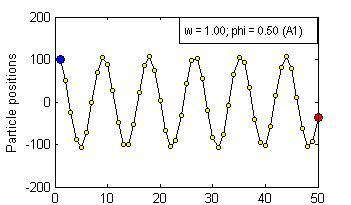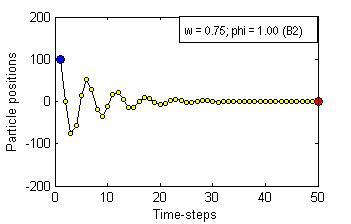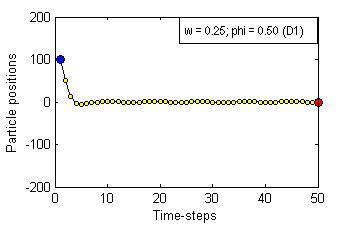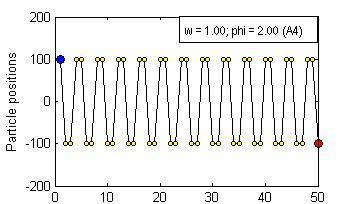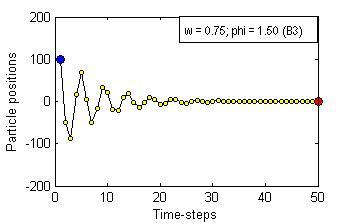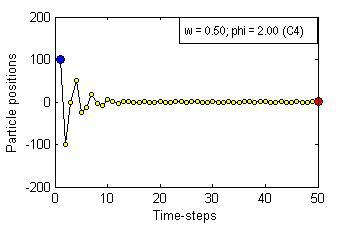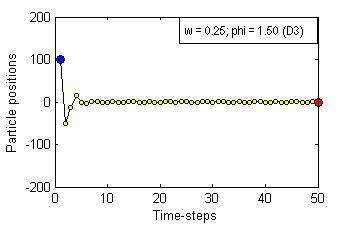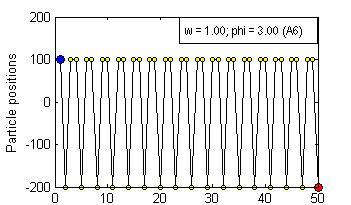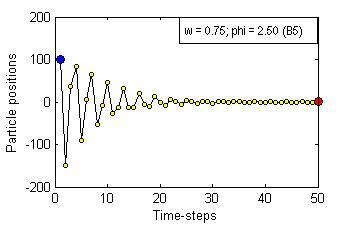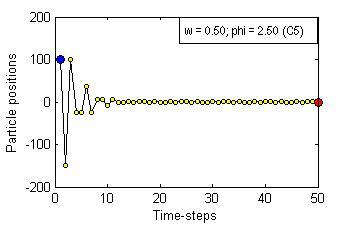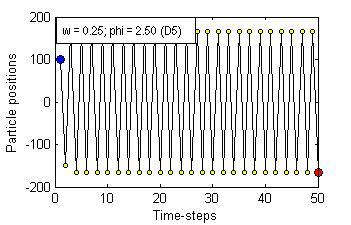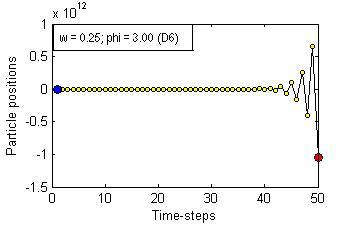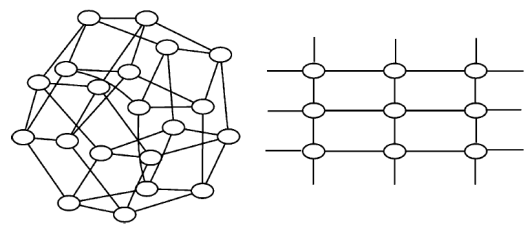
Particle Swam Optimization is a population-based and gradient-free optimization method developed by mimicking social behaviour observed in nature. Its ability to optimize is not specifically implemented but emerges in the global level from local interactions. In its canonical version, there are three factors that govern a particle's trajectory: 1) inertia from its previous displacement; 2) attraction to its best experience; and 3) attraction to a given neighbour's best experience. The importance given to each of these factors is regulated by three coefficients: 1) the inertia; 2) the individuality; and 3) the sociality weights. Their settings rule the trajectory of the particle when pulled by these two attractors. Different speeds and forms of convergence of a particle towards its attractor(s) take place for different settings of the coefficients. A more general formulation is presented aiming for a better control of the embedded randomness. Guidelines to select the coefficients' settings to obtain the desired behaviour are offered. The convergence speed of the algorithm also depends on the speed of spread of information within the swarm. The latter is governed by the structure of the neighbourhood, whose study is beyond the scope of this paper. The objective here is to help understand the core of the PSO paradigm from the bottom up by offering some insight into the form of the particles' trajectories, and to provide some guidelines as to how to decide upon the settings of the coefficients in the particles' velocity update equation in the proposed formulation to obtain the type of behaviour desired for the problem at hand. General-purpose settings are also suggested. The relationship between the proposed formulation and both the classical and constricted PSO formulations are also provided.
翻译:粒子优化是模仿自然所观察到的社会行为而开发的一种基于人口和无梯度的优化方法,其优化能力不是具体实施,而是从地方互动中产生的,在全球层面出现优化能力。在粒子轨迹的典型版本中,有三种因素:(1) 惯性;(2) 吸引最佳经验;(3) 吸引到某个邻居的最佳经验。对这些因素的重视由三个系数调节:(1) 惰性;(2) 个性;和(3) 社交权重。其设置在这两个吸引者拉动时,决定粒子的轨迹。粒子向吸引者(s)的趋同速度和形式不同。粒子向吸引者(s)的趋同速度和形式不同。一个更笼统的表述旨在更好地控制嵌入随机性;提出了选择系数环境以获得理想行为的指导方针。算法的趋同速度还取决于在温度内信息的传播速度。后者由邻系结构调节,其研究范围从精细的直径到直径的直径结构,也提供了某种直径直径的直径方方形。这里的目标是提供SO至直径方形的形成,从而了解某些方向的形成。








